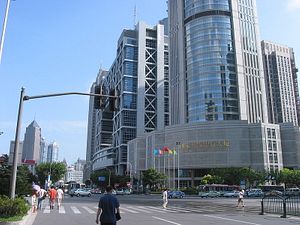China has made dramatic economic progress during the last five years, weathering the global financial crisis and becoming the world’s largest exporter and second largest economy, surpassing Japan. The next five years, however, will present major challenges to China’s development model with its emphasis on state-led capital allocation, mercantilist trade policies, and an undervalued currency as evidenced by massive foreign exchange holdings.
China’s authoritarian development model appears robust, generating high real growth year after year. But if true economic development is measured by the alternatives open to people, China’s market socialism falls far short of achieving the status of Hong Kong as the world’s freest economy.
The flaws in China’s development model will become increasingly evident as inflationary pressures build, differences in rural-urban living standards mount, a growing middle class demands an end to censorship, capital controls narrowly limit investment alternatives, land rights are strictly curtailed, and freedom of movement is infringed upon by a draconian internal passport system.
Without the freedom to openly criticize the Chinese Communist Party’s monopoly on power, people won’t be free to choose preferred alternatives, including a genuine rule of law that protects life, liberty, and property. Without capital freedom, people won’t be free to choose investment alternatives that make them better off than the negative real returns on holding deposits at state-owned banks. Without transferable land-use rights, farmers will remain at the mercy of local officials and be unable to realize the full value of those rights. And without the freedom to move and to be treated equally under the law, the divide between those holding urban resident permits and non-holders under the hukou system will continue to foster social unrest.
The overriding challenge facing China’s goal of sustainable development will be to engage in institutional change that grants individuals more economic and personal freedom. Financial repression needs to give way to liberalization—allowing market forces to determine interest rates and allocate capital, permitting greater exchange-rate flexibility, and giving the People’s Bank of China more independence so it can use monetary policy to achieve long-run price stability. More fundamentally, China needs to depoliticize investment decisions by opening capital markets, privatizing state-owned banks, and making the yuan fully convertible.
China also needs to normalize its balance of payments. It doesn’t make sense for a capital-poor country to be a net exporter of capital—accumulating nearly $3 trillion of foreign exchange reserves to keep its currency undervalued against the dollar in order to promote exports. China should exploit its comparative cost advantage but not revert to crude mercantilism. By allowing relative prices (including interest rates and the real exchange rate) to adjust, and by respecting intellectual property rights and removing barriers to market access, China would widen the range of choices open to people and increase domestic consumption.
Moving away from state-led development toward market liberalism would strengthen US-China ties and promote peaceful development. China would then more likely be viewed as a constructive partner rather than an emerging threat.
James A. Dorn is vice president for academic affairs and a China specialist at the Cato Institute in Washington, DC.

































